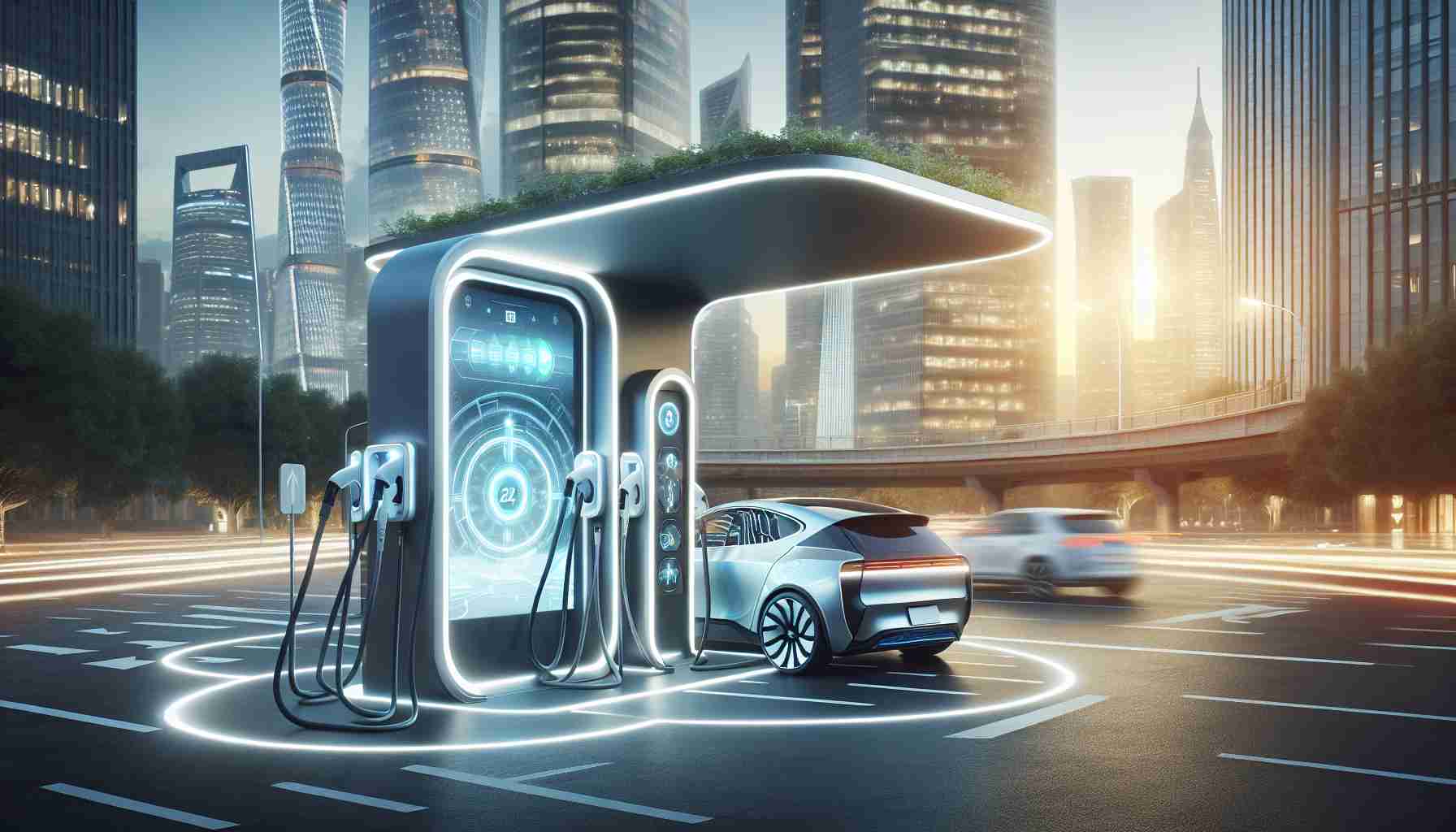In a groundbreaking move, Huawei Technologies is set to revolutionize the electric vehicle (EV) charging landscape in China. The technology giant plans to install a whopping 100,000 fast charging stations across the country this year, offering units that are more than twice as fast as Tesla’s current chargers. This move not only establishes Huawei as a key player in the EV charging market but also provides a significant boost to Chinese automakers pushing for fast-charging infrastructure.
At a recent event in Hangzhou, Liu Dawei, spokesperson for Huawei Digital Power, revealed the company’s ambitious goal of achieving 1 kilometer-per-second charging to provide drivers with a refueling experience similar to that of gas-powered vehicles. With this vision in mind, Huawei’s ultrafast chargers were developed to deliver an impressive output of 600 kW, which is among the highest in the world. In comparison, Tesla’s Supercharger, a leading fast-charging solution, has a maximum output of 250 kW in China.
To ensure compatibility with all EVs, including Tesla models, Huawei’s chargers have been designed to be universally applicable. Moreover, the charging infrastructure is not limited to specific locations or facilities. The company plans to install these units in a variety of settings, such as commercial facilities and highway service areas, creating a dense network of charging stations accessible to EV drivers across the country.
Key to Huawei’s success in achieving high charging speeds is the incorporation of advanced cooling technology. While increasing the output of a charger can generate excessive heat, Huawei has overcome this hurdle with a liquid coolant system, setting its infrastructure apart from traditional cooling fan-based models. This innovative approach ensures rapid charging while maintaining the longevity and safety of the batteries.
By entering the EV charging market, Huawei has demonstrated its ability to leverage its expertise in telecommunications, cellular base stations, and solar power generation to provide cutting-edge charging solutions. The push for EV chargers arose from the growing need for equipment that can keep up with the advancements in battery technology. As battery manufacturers, such as CATL, continue to develop batteries capable of charging significant ranges within minutes, the demand for high-speed charging infrastructure becomes increasingly crucial.
In a country where the number of EVs continues to rise, the existing public charging infrastructure falls short of meeting the demand for fast-charging capabilities. With only 2.7 million public charging stations as of 2023, and limited support for fast charging, the market is ripe for Huawei’s innovative solutions. By offering widespread compatibility and unprecedented charging speeds, Huawei’s infrastructure presents a promising opportunity not just for Chinese automakers but for the entire EV ecosystem.
While initially focusing on the domestic market, Huawei has not ruled out expanding its EV charging solutions globally. With its commitment to pushing the boundaries of technology and revolutionizing the EV industry, Huawei’s foray into fast-charging stations marks a significant milestone in the pursuit of sustainable transportation and a greener future.
FAQ: Frequently Asked Questions about Huawei’s Revolutionary EV Charging Stations
Q1: What is Huawei planning to do in the electric vehicle (EV) charging landscape in China?
A1: Huawei plans to install 100,000 fast charging stations across China this year, providing charging units that are more than twice as fast as Tesla’s current chargers.
Q2: How fast do Huawei’s ultrafast chargers charge?
A2: Huawei’s ultrafast chargers deliver an impressive output of 600 kW, which is among the highest in the world.
Q3: How does Huawei ensure compatibility with all EVs, including Tesla models?
A3: Huawei’s chargers have been designed to be universally applicable, ensuring compatibility with all EVs.
Q4: Where will Huawei install these fast charging stations?
A4: Huawei plans to install the charging stations in a variety of settings, such as commercial facilities and highway service areas, creating a dense network of charging stations accessible to EV drivers across the country.
Q5: What sets Huawei’s charging infrastructure apart from traditional models?
A5: Huawei’s charging infrastructure incorporates advanced cooling technology with a liquid coolant system, ensuring rapid charging while maintaining battery longevity and safety.
Q6: What drove Huawei to enter the EV charging market?
A6: The growing need for high-speed charging infrastructure to keep up with advancements in battery technology led Huawei to enter the EV charging market.
Q7: How does the existing public charging infrastructure in China fall short?
A7: As of 2023, China has only 2.7 million public charging stations with limited support for fast charging, which fails to meet the demand for fast-charging capabilities.
Q8: What opportunities does Huawei’s infrastructure present?
A8: Huawei’s infrastructure offers widespread compatibility and unprecedented charging speeds, benefiting not just Chinese automakers but the entire EV ecosystem.
Definitions:
– EV: Electric Vehicle
– kW: Kilowatt, a unit of power
– CATL: Contemporary Amperex Technology Co. Limited, a battery manufacturer
Suggested related links:
– Huawei Official Website
– Tesla Official Website
The source of the article is from the blog myshopsguide.com
